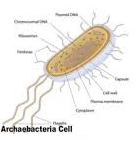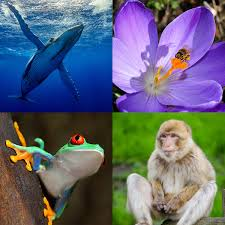In this article, we are going to study another important component of blood plasma i.e. White blood corpuscles, their types, structures, and functions. They are colourless, nucleated, amoeboid (irregular shape) and phagocytic cells larger than RBC’s. Their size ranges from 12 μm to 20 μm. They have mitochondria, Endoplasmic reticulum, Golgi complex, ribosomes, and centrioles. […]
Category: Biology
Three Domains of Life

Science > Biology > General Biology > Diversity of Living Organisms > Three Domains of Life Prior to 1969 organisms were classified into two kingdoms: the Plant Kingdom and the Animal Kingdom and on the basis of a cell, organisms were classified into two categories Prokaryotae or Monera (which comprised bacteria) and Eukaryotae (which comprised animals, plants, fungi, […]

Science > Biology > General Biology > Diversity of Living Organisms > Need for Classification of Living Beings Scientists have identified and named 1.7 to 1.8 million species of living organisms. Of these, about 1.2 million are animal species while 0.5 million are plant species. The group of insects is the largest group with 1.025 […]
Basis of Biodiversity

Science > Biology > General Biology > Diversity of Living Organisms > Basis of Biodiversity Scientists have identified and named 1.7 to 1.8 million species of living organisms. Of these, about 1.2 million are animal species while 0.5 million are plant species. The group of insects is the largest group with 1.025 million species. According […]
Biodiversity

Science > Biology > General Biology > Diversity of Living Organisms > Biodiversity Scientists have identified and named 1.7 to 1.8 million species of living organisms. Of these, about 1.2 million are animal species while 0.5 million are plant species. The group of insects is the largest group with 1.025 million species. According to biologists […]
Characteristics of life

Science > Biology > General Biology > Introduction to Biology > Characteristics of life Biology is a branch of science which studies living beings that all plants and animals including humans. Biology examines the structure, function, growth, origin, evolution, and distribution of living things. It classifies and describes organisms, their functions, how species come into existence, and […]
Alimentary Canal: Brief Idea
Science > Biology > Digestion and absorption in Human > Alimentary Canal: Brief Idea The digestive system in humans consists of an alimentary canal and associated digestive glands. The human alimentary canal (aliment: nourish) is a continuous muscular digestive tube about 8 to 10 m long that runs through the body. It is open at two ends […]
Buccal Cavity: Teeth

Science > Biology > Digestion and absorption in Human > Buccal cavity – Teeth In this article we shall study, the characteristics of teeth (dentition), different types of teeth and the structure of the tooth. The teeth are the strongest, hardest and rigid substances in the human body specialized for the biting and grinding of […]
Buccal cavity – Mouth

Science > Biology > Digestion and absorption in Human > Buccal cavity – Mouth The digestive system in humans consists of an alimentary canal and associated digestive glands. The human alimentary canal (aliment: nourish) is a continuous muscular digestive tube about 8 to 10 m long that runs through the body. It is open at two ends […]

Science > Biology > Human Anatomy and Physiology > Cardiovascular System > Disorder Associated With RBCs Anaemia (Anemia) Anaemia or Anemia is defined as a decrease in the ability of the blood to carry oxygen due to (1) a decrease in the total number of erythrocytes, each having a normal quantity of hemoglobin, or (2) […]